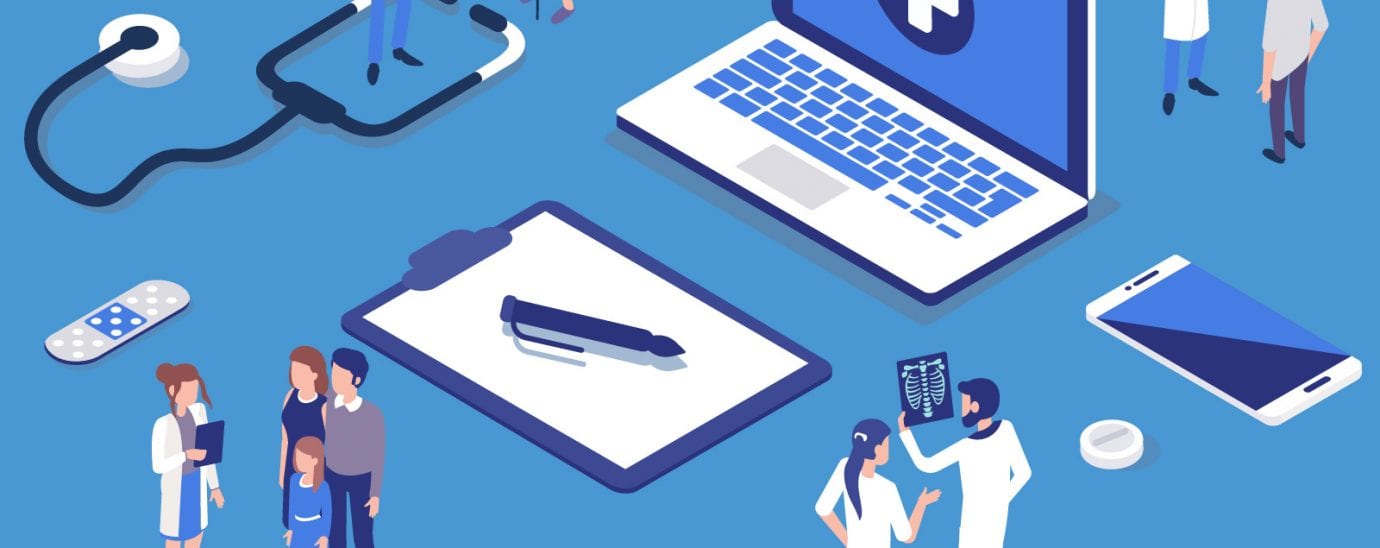Medical innovation in the COVID era

The 2020 Covid-19 pandemic placed an incredible burden on the global healthcare system with costs associated with the outbreak at more than £1bn per month in the UK alone. This brought into sharp focus the challenge of delivering excellence in healthcare while also managing the costs associated with this – something systems around the world have found an almost impossible challenge long before the recent viral infection.
Bernard Ross, CEO of Sky Medical Technology argues that, with a backlog of operations and treatments to address, global healthcare systems will need to embrace innovation more than ever to balance the growing needs of patients against limited budgets.
In recent meetings with NHS medical practitioners, it has been suggested that healthcare innovation had developed more since the start of the pandemic than it had in a decade previously. As the old saying goes, there is nothing like a crisis to make things happen quickly.
If the legacy of the pandemic is the fast-tracking of innovation in global healthcare systems, there will at least be one positive outcome to emerge from the crisis. Part of this has been drive by need. The highly contagious nature of Covid led to the fast adoption of technologies such as telemedicine for virtual doctor’s appointments, but it would be naive to think these technologies did not exist before the pandemic; an urgent need to develop a new way of delivering healthcare simply ran a coach and horses through the status quo, deploying new, relevant solutions as it travelled. The need to operate remotely drove the adoption of other existing technologies into healthcare, for example, the use of Virtual Reality (VR) or Augmented Reality (AR) in video consultations and for remote training of medical staff.

Now, as the crisis begins to subside, a critical question is whether innovation will continue to be adopted at the same pace in the future. In my view, increasing the pace of innovation in medicine is not only desirable but an essential part of delivering a healthcare system fit for the 21st Century.
Rebalancing the scales
Massive societal changes will continue to strain healthcare systems globally, most notably an ageing population. Nobody would argue that people living longer was a bad thing. But this leads to three unique but related challenges: first, an ageing population means more people need treatment; second, as science develops, so do positive medical outcomes, but not without additional budgetary demands; finally, more people retired leaves relatively fewer people in work to fund medical care. During the next decades, healthcare will need to reshape significantly to address these issues. Technology is increasingly the ‘magic bullet’ needed to reduce the financial pressure on the NHS while, at the same time, enhancing patient outcomes.
Regulatory roadblocks
The bar to entry for new medicines is – rightly – extremely high. Companies have to gather significant evidence that products are safe and effective before they can even be considered for licence. Bringing a medical device to market requires rigorous testing, clinical studies – all of which requires money, time and commitment. Central to the adoption of new medicines is meeting regulatory requirements of health services around the world.
Regulatory organisations such as the UK’s National Institute for Health and Care Excellence (NICE) and the US’s Food & Drug Administration (FDA) are central to ensuring innovations are safe. However, if global healthcare systems are to continue adopting innovation beyond the pandemic, we need to ensure that the fast tracking that has taken place in the last year continues. In the first six months of the pandemic, the FDA granted more than 250 emergency use authorisations, including medical devices, PPE and ventilators. While some semblance of normality will clearly return as the pandemic eases, the huge success of the vaccination programme in bringing an early conclusion to the Covid-19 crisis can act as a primer for speeding up the deployment of innovation in the future.
Collaboration in innovation
This is in no way to argue that positive clinical and health economic data will not be just as important in the future as it has been in the past. Medical innovation companies need to remain respectful of how new medicines are adopted. In fact, they have an important role to play not only in demonstrating positive clinical and economic data but also in making it simpler for healthcare services to adopt innovation into existing systems so that the cost of adoption is also low. Innovation needs to fit as seamlessly as possible into existing systems. There are clever, evidence-based innovations yet to achieve adoption because they are not simple enough to integrate.
READ MORE:
- Business security remains resilient in the wake of coronavirus, say CISOs
- Market Access for MedTech: Speakers now announced!
- Why customer conversations are vital for brand survival in a post-COVID-19 world
- What can corporates learn from digital transformation in the COVID era?
Carrying the torch
The pandemic has been a pivotal moment in innovation – demonstrating what is possible to achieve when faced with a global healthcare crisis. This momentum must be maintained. Healthcare systems do not have an innovation problem as much as a replication problem: successful projects and clinical practice changes have rarely been reproduced everywhere in a system. The pandemic has changed this, allowing innovation to breakthrough faster than previously.
For more news from Top Business Tech, don’t forget to subscribe to our daily bulletin!